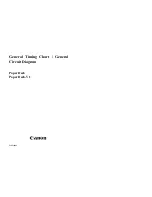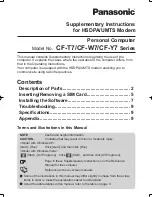
3. GENERAL OPERATION
Page 71
© 1998-2008 DH Instruments, a Fluke Company
Typical Sequence to Set Differential Pressures at a High Line Pressure
Set the desired line pressure (see Section 3.9.4.2, Setting a Line
Pressure (
[MODE]
,
<3HLdif>
,
<1run>
,
<2yes>
)).
Select
pressure to mass
or
mass to pressure
mode (see Section 3.9.12).
If desired, read DUT output at zero differential pressure with BYPASS valve
OPEN. Then, put the BYPASS valve in CLOSED position. Float both
PG7000 pistons before operating the BYPASS valve. Read DUT output at
zero as defined by the PG7000s if desired (this value can be used as an
offset correction on subsequent DUT differential pressure outputs).
Press
[ENTER]
and enter a pressure or mass value. All mass loading and
unloading to define differential pressures is performed on the
reference
PG7000. Follow normal PG7000 mass loading protocol (see
Section 3.6). Note, however, that the mass loading instructions are “on top
of” the mass already loaded to define the line pressure.
The mass corresponding to the line pressure must remain exactly the same
on both the
tare
and
reference
PG7000s throughout the differential
pressure measurements.
Float the
tare
and
reference
pistons. For best results put both pistons
slightly above the 0.0 point, for e0.3 mm.
When the
reference
PG7000 indicates
Ready
on both
Ready/Not Ready
indicators (see Section 3.4), take the D U T r e a d i n g a t t h e d i f f e r e n t i a l
p r e s s u r e i n d i c a t e d o n t h e t o p l i n e o f the
reference
display. For best
results log DUT readings and average them over time while the PG7000
pistons fall through the 0.0 mm point. Averaging for 10 to 30 seconds allows
the random pressure noise from piston rotation to be integrated and
eliminated.
Repeat
Steps through for each desired differential pressure point.
If the last differential pressure is zero, consider reading the DUT output with
the BYPASS valve CLOSED. Then OPEN the BYPASS valve to set “true”
zero differential pressure.
Viewing Line Pressure, Starting Piston-Cylinder Temperatures and Natural
Piston Fall Rates ([MODE], <3HLdif>, <2view>)
To view the last line pressure setting, the starting piston-cylinder module
temperatures, the natural piston fall rates and the “natural fall rate difference”
recorded at that line pressure, press
[MODE]
and select
<3HLdif>
,
<2view>
.
The display is:
1.
Last line pressure value set (line pressure is
always in gauge mode).
2.
Temperature of the reference piston-cylinder
logged when the line pressure crossfloat was
completed.
3.
Temperature of the tare piston-cylinder
module logged when the line pressure
crossfloat was completed. The starting
temperatures are the temperatures logged at
the time the line pressure setting crossfloat
was completed. These temperatures are
Line P: 1000 psi
T 21.24 ºC R 21.47
used in calculating corrections to the differential pressure to take into account differential
temperature changes in the piston after completion of the crossfloat (see Section 7.2.1 for
differential pressure calculation information).
Содержание PG7000
Страница 10: ...PG7000 OPERATION AND MAINTENANCE MANUAL 1998 2008 DH Instruments a Fluke Company Page VIII N NO OT TE ES S ...
Страница 44: ...PG7000 OPERATION AND MAINTENANCE MANUAL 1998 2008 DH Instruments a Fluke Company Page 34 N NO OT TE ES S ...
Страница 182: ...PG7000 OPERATION AND MAINTENANCE MANUAL 1998 2008 DH Instruments a Fluke Company Page 172 N NO OT TE ES S ...
Страница 210: ...PG7000 OPERATION AND MAINTENANCE MANUAL 1998 2008 DH Instruments a Fluke Company Page 200 N NO OT TE ES S ...
Страница 214: ...PG7000 OPERATION AND MAINTENANCE MANUAL 1998 2008 DH Instruments a Fluke Company Page 204 N NO OT TE ES S ...
Страница 224: ...PG7000 OPERATION AND MAINTENANCE MANUAL 1998 2008 DH Instruments a Fluke Company Page 214 N NO OT TE ES S ...
















































